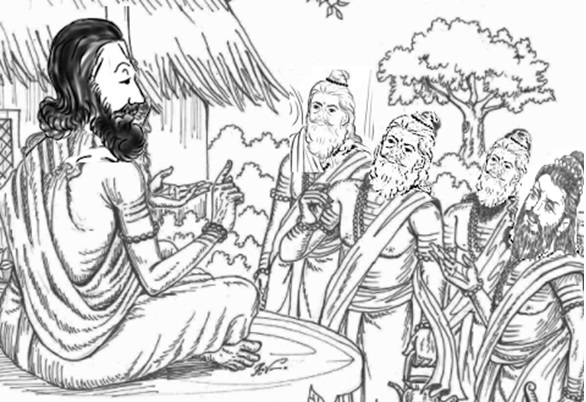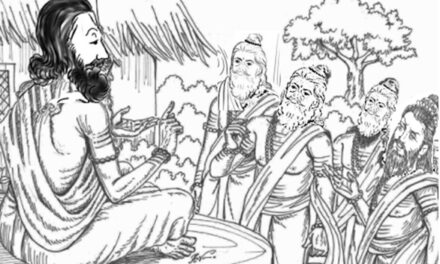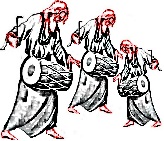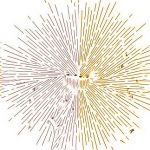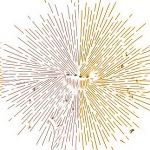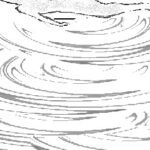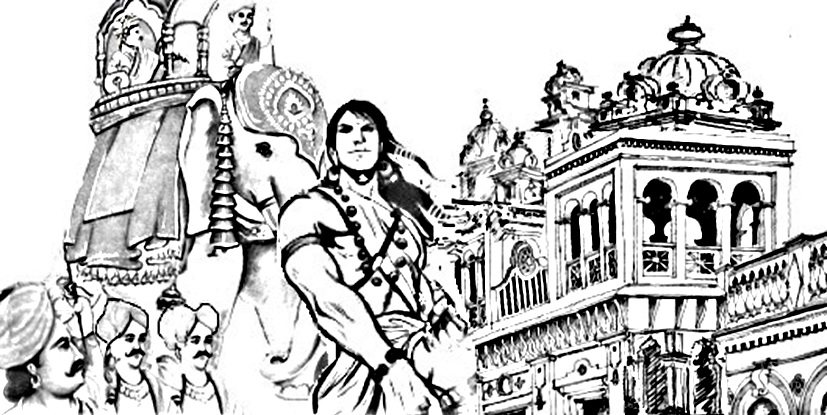

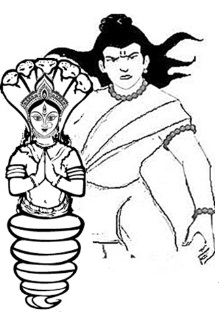
Kusha marries Naga Princess
Thus, with the exit of Rama and his brothers in Raghu’s line, their sons in order chose as their leader Kusa, who in all respects was valor and mighty amongst them to guide them and reined their respective states in unison.
Once when Kusa was in discussion in his chamber, he was confronted with an unknown voice that blessed ‘Goodness surround you’ whence Kusa saw a stranger woman standing before him and asked her ‘Who are you, respectful lady, how did you enter my chamber when the bolted doors barred others entry into my room and for what purpose have you come? Who is your lord (husband)?
The shabbily robbed women whispered ‘Look King, I am lord of self and guardian Goddess of your ancestral capital Ayodhya after your father demised. Though your folks are happy race under your splendid rule everywhere, but I am pained to see you remaining mute spectator to the subjects in Ayodhya that remains shattered of its beauty and serenity in contrast to the scene under your ancestral rule. What exists today is the desolation of her streets and ruined houses, ever green grass grown spongy streets now carpeted with rough leaves that scratches feet, veils of fair women turned into spider webs barring all, streets are unsafe to venture in night as jackals howls (meaning rogues and ruffians) and evil spirit engages, lo, the river-banks of Sarayu is scattered with the remainders of buffalo and sheep left over by the wild animals. Oh, King, return, quickly engage your attention on Ayodhya and revive its status’. Thus spoke the lady and vanished. Kusa shocked to hear the news and unable to see reason, still in mind thanked for her message and immediately set out motion with schemes generated, got readied his mission with a big force and proceeded to Ayodhya. As his mighty army crossed mount of Vindhya and river Ganges, on way turning dust to mud and again mud to dust.
On reaching Ayodhya with speed, he set out to clear the mess, by bannering himself in the city outskirts in a tent, to supervise the operation rescue. The fair town swarmed by his men repaired the buildings, desilted the rivers and ponds driving away the snakes and reptiles there in hiding, and restored the city as if bloomed afresh from green groves. His folks were ecstatic to see their dwelling in the renewed city.
Thereafter he ensured that there was no bar to his folks meeting him anytime to get redressal. Each and every declaration remained not on his lip, but every action spoke of his genuine intent and not law of jungle but law of justice prevailed in redressing the grievances of folks. None of his action or reactions were whimsical, but were as pure as gem and borne out of proper counselling from elders in court. Agent network was strong enough to help him rule with wisdom. He performed Ashwametha Yagya too.
Then came the grievous heat of summer when Kusa with his consorts went forth to bathe and play in river when an ornament held in one of his Princess body, a precious bracelet was lost in water. On command of the King, the fishermen searched up till deep inside the river and found it to be resting on the body of Naga Princess Kumudavathi, sister to the King of snakes, Nagaraja dwelling deep inside water pool. When the ornament was sought back, Nargaraja refused to part with and turned back the messengers of Kusa, empty handed.
Enraged by the reply, Kusa set out powerful arrows to drive away the reptiles and snakes dwelling deep inside the water simultaneously engaging Vishnu’s vahana (Carrier vehicle) Garuda to finish off the snakes. Feeling nervous with Kusa’s anger and Garuda engaged, serpent King Nargaraja came out of the river, paid handsome tributes to Kusa and restored the ornament, and in addition offered his sister Kumudavathi to wed to him which Kusa joyfully accepted and soon wedded Kumudavathi to spend long years in happy union. In few years Kumudavathi bore for her lord a noble son who was named Athithi.
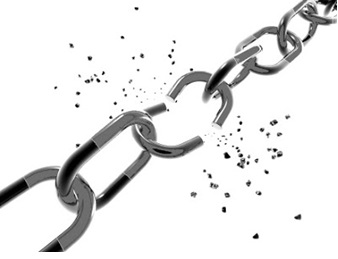
Beginning of an end
Out of two sons Lava and Kusa there was no mention of Lava in any manner or his status after the realm was handed over to Kusa. After Kumudavathi bore a noble son great Athithi, Kusa went on war spree in several directions expanding the Kingdom. There was no dearth of happiness or cheers to his folks anywhere which he ruled or conquered. Later some time When Devendra (Lord Indira) fought a battle with Daityas, he took valor of Kusa for his help. Though Daityas were defeated and driven back with their their King killed, yet in the battle long fought, Kusa too kissed death, soon to be followed by agonized Kumudavathi to join her lord in heaven. With the demise of Kusa his noble son Athithi took over the reigns.
Nishadha, King Athithi’s son was his successor after Athithi’s demise, and then the line stretched to Nala and Nabha as successor sons of each. Pundarika followed Nabha, then Kshemadha followed by Pundarika. Kshemadha’s fame was no less to his predecessors in all respects and his folks were happier lots. For some time Kshemadha ruled the Kingdom before handing over the same to his son Devanika and retired to heaven. Ahinahu, Devanika’s heir conquered many Kingdoms in all directions and reigned them well.
Pariyathra was the next in line to Ahinahu, soon followed by successors namely Sila, Kusa (not the one in Lava Kusa) and Unnabha. Unnabha’s heir Vajranabha’s fame spread far and wide as his rule was comparable to Devendra in might and valor besides fair rule. Vajranabha’s demise brought his son Sanganain throne, soon followed by his son Viyooshidasa who exercising his mystic powers blossomed from the womb of his spouse to reborn as Visuvadasato reign the nation after the demise of Viyooshidasa. Visuvadasa, a great devotee of Lord Siva after renouncing his life ensured that his son Hiranyanabha took over the reigns. Saintly sage Yagnyavalyaka reportedly learnt the art of Adhyathma Yoga from Hiranyanabha. Hiranyanabha’s son Kausala took over the reigns after his father’s demise and he crowned his son Brahmishtha before fading away. During the reign of Brahmishtha, his subjects, enjoyed peace prevailing joyous life. Even Garuda, carrier vehicle of Vishnu served him so believed the folks. Even as Brahmishtha was alive, his son Paushya ascended the throne at the request of his father, who guided him in administering the state. Paushya learnt the art of Yoga from Jaini Maharishi whom he adapted as his Guru. Ruling for long period, he retired and enthroned his son Dhuruvasanthi and passed away.
Upright Prince Dhuruvasanthi ruled the earth following his ancestors in all respects including hunting, when on a fateful day while hunting, he was killed by a ferocious Lion. Dhuruvasanthi could not nominate his son as his successor as his son was infant when he died. However, when the news of the Kings demise reached the ears of the council of the ministers they wasted no time in announcing the King’s son Sudarshan as his heir in command and enthroned the infant as the ruler of Ayodhya.
With Sudarshan ascending the throne, the doors of doom opened for the end of Raghu lineage. Though Sudarshan was young when ascended the throne, he was as fast as others in absorbing the arts of ruling in all sincerity and earned the name mighty King in a short time. His qualities shone like great blue stone in the midst of sapphire, like a fiery Lion, King in Jungle. Fondly admired as Maharaja, as he grew with flower of youth, charm of loveliness spread over his body, his beauty far excelled, he became charm for women’s love, thus slowly absorbing the Kingly qualities of sensual pleasure into his mind and character. Exponent of Kamasutra he was much sought after by women. After years of glorious rule end enjoying the earthly life, Sudarshan, fed up in life, handed over the throne to his son Agnivarunan and retired to Naimisaranya grove to lead life of peace in the last stages of life. When Agnivarunan sat in saddle, his foes remained crushed, unable to revolt, there was no dearth of funds to administer, rules and regulations were well laid out to ensure effective functioning. His subjects lived in peace, free of concerns from others.
Thus Agnivarunan, free from concerns in governing and at the same time unconcerned of his peoples welfare, engaged himself entirely in sensual pleasures and wasted his life in ignoble pursuits. No amount of counselling by the council of Ministers would check his pleasure-seeking ways. As the days passed, his passion for sensual pleasure instead of waning, only increased thrusting incurable him to bed; the disease curbed his movements and confining him to bed. As Agnivarunan bore no offspring, gloom stuck the minds of the council on his successor. Even after several years since he ascended the throne, he did not meet folks and rarely met them when someone longed to meet him. Their attention was diverted to tell them that the King was in penance to beget a son and hid the fatal fact of the bedridden King’s incurable, chronic disease. As days moved, the King died. Even after the demise of the King, the fact was kept under the wrap and they called a well skilled priest in funeral rites to enact a drama as if a sacrifice was underway and in the pyre lit, the dead body of the King was secretly laid and put to rest. Next in haste they called a meeting and seated on throne the rightful Queen of the demised King, who carried beneath her breast all the royal qualities, since the dead King was left with no issue to rule beyond him. Sat in the royal throne and realizing the break in Raghu’s race, she however sagely ruled the state to flutter the flags of Raghu’s race and as she ruled, the folks in her land fully and willfully honoured all her commands issued. With this narration Kalidasa’s original Raghuvamsa got concluded abruptly. Beyond this, further manuscripts were found missing.
Raghuvamsam- Random thoughts
Prior to Agnivarunan those who sat on the throne in Raghu’s lineage perished either ending their life their own or taking to austere life to reach jungle. Even as the spouse of Agnivarunan took to the reins, the folks lead happier life abiding to rules of law, law of rule transparently prevailed, but the break in the chain of link established by a maid instead of a male heir taking the reins in Raghu’s lineage was the last straw in the wind of Raghu lineage, however the rulers beyond the spouse of Agnivarunan remains shrouded in mystery even to this date.
Some scant documents available to scholars suggest that after Agnivarunan’s death and the rule of his spouse, more than 35 rulers reined in solar dynasty’s Ikshavaku lineage, the last amongst them being King Sumatra who reportedly ruled North of Surat in Gujarat, but his history is also unavailable and remains sketchy. Strangely there remains firm belief that in the yugas to come Maru son of one Shik Raghu, who took to the reins after the demise of Agnivarunan’s rulers and who excelled in the art of Yoga will be born again in Kaliyuga to re-establish Raghu dynasty. However, details like whether he belonged to the lineage of Agnivarunan’s spouse or someone else remains vacuum. Therefore, some of the scholars believe that Maru could be one of the leafs of Agnivarunan’s rulers though every first leaf in the ruler dynasty occupied the realm after their father’s demise in Raghu’s lineage and the fate of seconds or third leafs in the same family were never debated upon.
Similarly, some stories suggest that the eight in line of the rulers after Maru’s rein was one King Brahathpal who reportedly aligned with Kauravas and fought for them in the war against Pandavas and killed by Abhimanyu in the Mahabharata war. But again, none of these episodes figure anywhere in Kalidasa’s Raghuvamsa or in Valmiki Ramayana. However based on Kalidasa’s Raghuvamsa, the lineages of Lord Rama, both before and after him were as below:
1) Dilipan
2) Raghu
3) Ayan
4) Dasaratha
5) Rama
6) Lava
7) Kusa
8) Athithi
9) Nishadha
10) Nala
11) Nabha
12) Pundarika
13) Kshemadha
14) Devanika
15) Ahinahu
16) Pariyathra
17) Sila
18) Kusa (Not from Lava and Kusa)
19) Unnabha
20) Vajranabha
21) Visuvadasa
22) Hiranyanabha
23) Sanganain
24) Viyoshidasa
25) Adhyathma
26) Kausala
27) Brahmishtha
28) Dhuruvasanthi
29) Sudarshan
30) Agnivarunan
31) Agnivarunan’s wife
Kalidasa’s Raghuvamsa ends abruptly with Agnivarunan beyond which details of the rulers in Raghu dynasty remained blanked. It is quite possible that the same could have been scribbled in the untraced pages of Kalidasa’s Raghuvamsam, so conjectures the scholars. There is yet another interesting story connected to Kalidasa’s Raghuvamsam.
Kalidasa was one of the gems in Ujjain King Bhoja Raja’s council of ministers and both held deep rooted relationship. However, they often discarded when in anger Kalidasa used to remain incognito for some time before re-joining with the king again when their head cooled. Once such an occasion arose and Kalidasa left the King, remaining untraced for a long period.
Kalidasa while in hiding stayed with a whore and claiming himself to be a poet. Though Kalidasa served in the courtyard of the King, very few have only met him, while others have only heard of him, lo, even most of the intelligencers (spies) have not seen the face and hence it was tough to track Kalidasa whenever he remained elusive. Aware of the difficulties involved in tracing his missing friend Kalidasa, the worried King Bhoja, eager to meet his friend and guide in literary field, played a ploy to trace the location of Kalidasa, and announced huge bounty to those who rip open the riddle of the King, as the King was sure that none except Kalidasa can unravel the knot and once when someone comes with an answer, then Kalidasa’s hideout could be tracked.
The whore with whom Kalidasa stayed was wicket in nature and she decided to enrich exploiting the talent of the stranger poet and approached him seeking solution to crack the riddle to get the bounty, and unwitting Kalidasa gave the whore a verse in Sanskrit that unravelled the knot of the puzzle. Thus got the true answer, the dubious whore quietly murdered him while in sleep by slicing his head in order to ensure that he may not approach the King beforehand claiming the bounty.
Next when she went to the palace and submitted the verse in answer to the riddle and claimed the bounty, from the composition the King understood that only Kalidasa would have unravelled it and though released the bounty to her, pressurized her to tell the wizard who solved the riddle. On learning the entire news, the next thing the King did was to rush with her to bring to life his dragoman Kalidasa whom he longed to see so long. Bhoja possessed a special magic power with which even the dead can be revived and retained for a few hours. Now on reaching the house of the whore where the dead body of Kalidasa lay, Bhoja quickly applied his power to awaken him.
As Kalidasa raised up as though he got up from sleep, both hugged each other and wept uncontrollably. Kalidasa reminded Bhoja that time available for him to remain alive being short, Bhoja should complete the unfinished Raghuvamsam with the unutilised briefs held by him (Kalidasa) and instantly gave them to Bhoja. In minutes of passing on the briefs Kalidasa fell dead again and Bhoja in morose took the grief in boldness and commenced compiling Raghuvamsam afresh again, yet he too could not complete it and the incomplete version came to be later known as epic Bhoja Sambu. It was quite strange that even the compilation of Bhoja Sambu ended abruptly for unknown reasons with the episode of Agnivarunan, same as Kalidasa’s Raghuvamsam, others remained untraceable.
Kalidasa’s Raghuvamsam dealt Rama’s predecessors and successors in general including their sins and dooms of previous births, but it remained silent on the divinely aspect of Rama. Since Kalidasa has referred Valmiki Ramayana in his work, the scholars surmise that he may have read Valmiki Ramayana in original before composing Raghuvamsam. Again, the scholars while suggesting that the Valmiki Ramayana in original consisted of 24000 verses describing in lucid the birth to death of Rama without incorporating details either on Rama’s predecessors or his successors. However, the dissenting voices too in scholars suggest that the missing contents of Valmiki Ramayana may have contained Rama’s lineage in totality which may have remained as the main theme for Raghuvamsam. Like the controversy surrounding Valmiki Ramayana, there remains mystery angle in Raghuvamsam too. The scholars surmise that Kalidasa’s Raghuvamsam too contained 25 Cantos out of which only 19 Cantos are traceable and contents there in the remaining is unknown because Raghuvamsam ended abruptly with the rule of the spouse of Agnivarunan. Therefore, the epic Raghuvamsam of today is not a complete document on Rama’s lineage and part of Rama’s history remains shouldered in mystery.
-Article concluded

